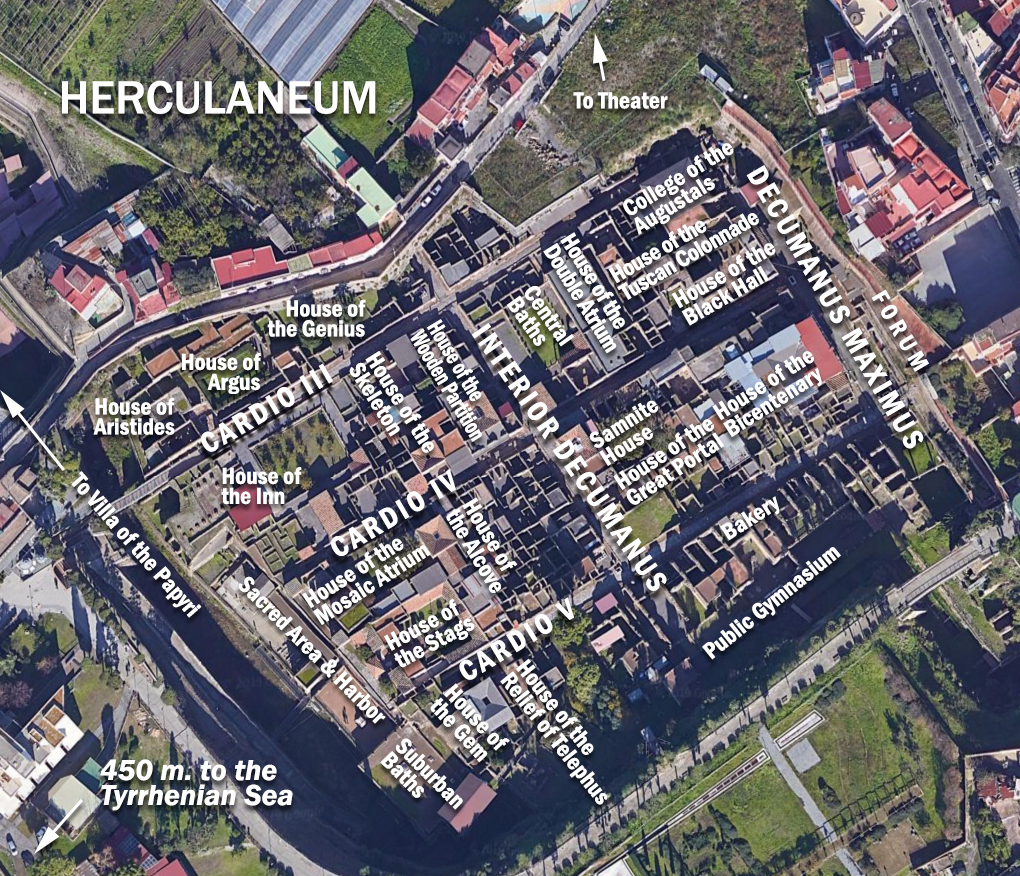
Lost city partially recovered
| When the volcano Vesuvius erupted in 79 CE, southerly winds carried its ash to Pompeii, killing many of its inhabitants and burying the city. Simultaneously, it spewed a huge river of scalding-hot mud to the west, which buried the nearby city of Herculaneum. Over dozens of decades, archaeologists have slowly uncovered the ancient city. To their astonishment, they have discovered that the mud preserved much of it as if the eruption happened only yesterday. Students of the Bible will find that exploring both Herculaneum and Pompeii will help them to visualize and understand more deeply the daily life, attitudes, and culture of people living in the time of the early Roman Empire. |
| Here are links to one of the best sites detailing the finds at Herculaneum. • Historical introduction • Map of the city with index to detail pages Preservation is an ongoing challenge, bolstered by recent reorganization: • Herculaneum Conservation Project |
| Want to dive deeper? |
| See also my Bible Atlas from Space page on Pompeii. For further reading: “Herculaneum,” article from Encyclopaedia Britannica, recently updated by Kathleen Sheetz. Ethel Ross Barker. Buried Herculaneum. London: Adam & Charles Black, 1908. Charles Waldstein. Herculaneum: Past, Present, and Future. London: Macmillan & Co., 1908. Bruce Longenecker. In Stone and Story: Early Christianity in the Roman World. Grand Rapids, Mich.: Baker Book Press, 2020. E-book edition Longenecker introduces students to the Roman background of the New Testament by immersing them in the life and culture of first-century Pompeii and Herculaneum. Discussing ancient artifacts in relation to citizens’ life stories, he addresses the protocols of engagement, popular devotion, social prominence, and household effectiveness. Includes discussion questions, maps, and 175 full-color photographs. 320 pages, softcover from Baker. |
